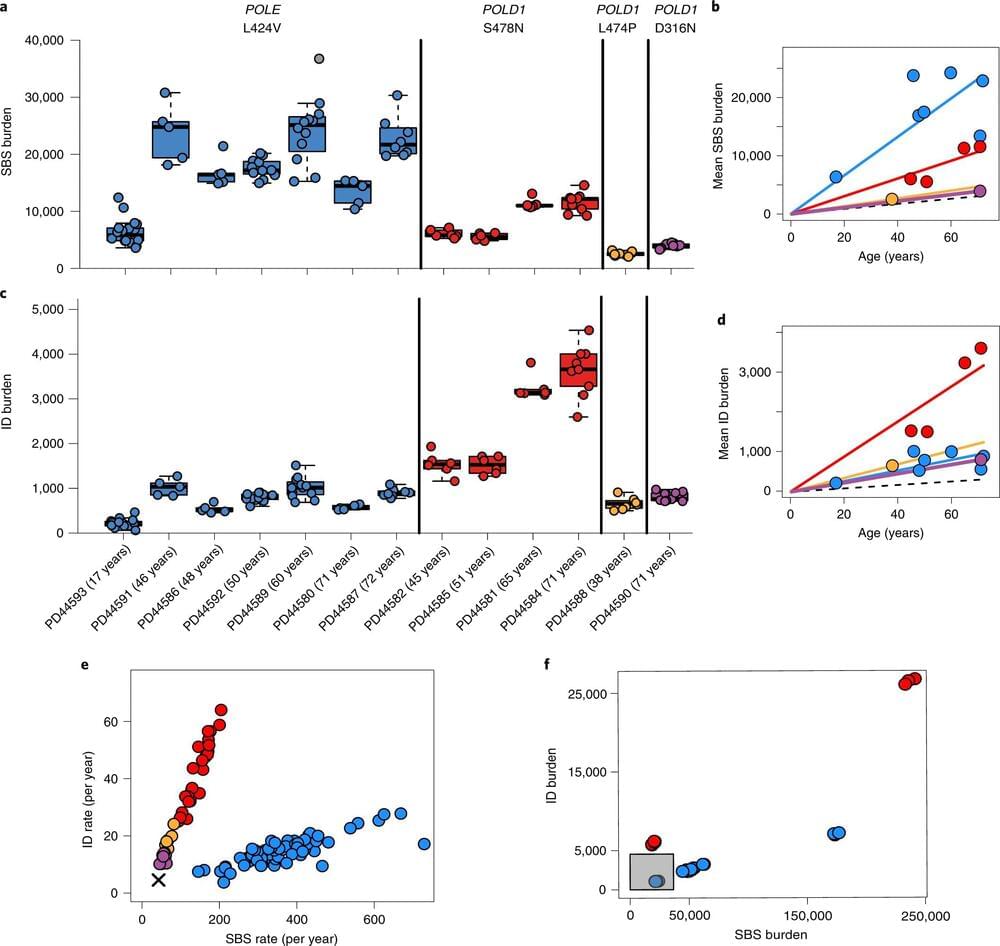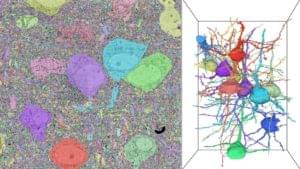Honda announced a range of efforts for the coming decade, including travel to the Moon and AI-powered robots.



New research exploring theories of aging has found that small mutations accumulating in DNA are unlikely to be fully responsible for this process.
The research, a collaboration between the Wellcome Sanger Institute, University of Birmingham, University of Edinburgh and others, found that human cells and tissues can accumulate many more mutations than are normally present, without the body showing the features associated with aging.
The new study, published today (30 September) in Nature Genetics, compared DNA taken from individuals with inherited mutations in genes involved in DNA replication with DNA from individuals who have normal versions of these genes. The researchers aimed to understand the impact of defective DNA replication on cancer risk and features associated with aging. The results suggest that build-up of mutations in normal cells is unlikely to be the only factor in the development of age-related disease, adding to the ongoing debate about the causes of aging.

Sept 30 (Reuters) — Major social media stars including Kim Kardashian, Justin Bieber and Charli D’Amelio are among celebrities whose Instagram followers experience more negative feelings about their self-image, according to internal Facebook (FB.O) research revealed by the Wall Street Journal this week, raising questions about the impact of celebrity culture online.
The Journal released the leaked research slide decks on Wednesday, which served as the basis of articles it published earlier this month saying that Facebook knew its apps harmed the mental health of some teenage girls and young users.
The research, titled “Social comparison on Instagram,” surveyed 100,000 people in March and April 2020 in nine countries, including the United States, Australia and Brazil.

Summary: The brain’s reward system plays a key role in helping behaviors and empathy.
Source: Tel Aviv University.
Are mammals at all able to demonstrate empathy for one another, engage in pro-social behavior, and help others in distress? New research from the Tel Aviv University examined the issue based on an animal model (rats) and found that just as with humans, rats are also split into various groups with different indicators, to the point that they only come to the aid of members of their group but do not help rats from other groups.

Artificial sweeteners are widely promoted as safe, zero-calorie alternatives to sugar, ideal for those trying to lose weight. But a new study is indicating artificial sweeteners may increase appetite and food cravings, particularly in females and the obese.
“There is controversy surrounding the use of artificial sweeteners because a lot of people are using them for weight loss,” says corresponding author on the new study, Kathleen Page. “While some studies suggest they may be helpful, others show they may be contributing to weight gain, type 2 diabetes and other metabolic disorders. Our study looked at different population groups to tease out some of the reasons behind those conflicting results.”
Page hypothesizes the discordancy in the science is somewhat due to the fact that many studies investigating the effects of artificial sweeteners on metabolic activity or the brain are conducted in mostly male subjects, often with normal weight. This new research set out to investigate the influence of artificial sweeteners on these processes across a broad cohort of men and women.

Genetic diseases are a compelling target for viral gene therapy. One condition that scientists are investigating to see if they can treat with gene therapy is a rare genetic disease called Leber congenital amaurosis, or LCA is a progressive condition that disables critical cells within the retina. The damage begins at birth: it eventually robs patients of central vision and color perception, often rendering them legally blind. But there may be another way. On Wednesday, researchers presented evidence from a breakthrough gene-editing experiment that restored some color vision to patients with LCA vision loss.
CRISPR is already under investigation as a gene therapy for blood disorders like sickle cell disease and beta-thalassemia. It may well have other uses, such as treating cancer by editing mutated DNA. But the process is not without its hurdles. Treatments for blood disorders like these involve taking cells from the patient’s body, changing them in vitro in the lab, and then re-infusing them back into the patient’s body. That works great for blood, which you can take out, filter, and put back in with relatively few consequences.
But because LCA is a disease of the retina, you can’t just take out cells and then infuse them back in. The retina is a delicate, multilayered membrane that resents any disturbance. The eye also has a system of physical defenses not unlike the blood-brain barrier. Furthermore, the immune system sometimes responds with extreme prejudice to eye injuries or infections, to the point of causing an actual autoimmune disease where the body attacks its own eyes. How, then, could researchers get the CRISPR treatment into the retina, past the body’s ferocious defenses and without further damage?

At the SAS 2021 security conference today, analysts from security firm Kaspersky Lab have published details about a new Chinese cyber-espionage group that has been targeting high-profile entities across South East Asia since at least July 2020.
Named GhostEmperor, Kaspersky said the group uses highly sophisticated tools and is often focused on gaining and keeping long-term access to its victims through the use of a powerful rootkit that can even work on the latest versions of Windows 10 operating systems.
“We observed that the underlying actor managed to remain under the radar for months,” Kaspersky researchers explained today.
(https://www.linkedin.com/in/evelyne-yehudit-bischof/) is an expert in internal medicine and oncology, with a focus on preventative and precision medicine, bio-gerontology, and geronto-oncology.
Dr. Bischof is deeply passionate about next-generation medical technology, and the applications of artificial intelligence for biomedical research and practice.
Dr. Bischof spent a decade practicing medicine and performing translational research in Switzerland, US, and China.
Dr. Bischof is a medical doctor with an MD from Max Planck Institute for Molecular Biology and Genetics, and interned at Columbia University, Harvard MGH, and Beth Israel Medical Deaconess.
Dr. Bischof is the author of over 40 peer-reviewed papers and is a frequent speaker at scientific and medical conferences.
Dr. Bischof serves as Assistant Professor — Shanghai University of Medicine and Health Sciences; Associate Faculty Shanghai Jiao Tong University, and Researcher at University Hospital of Basel.

Using far more advanced imaging techniques than those of their earlier contemporaries, researchers at the DOE’s Argonne National Laboratory are working to develop a brain connectome — an accurate map that lays out every connection between every neuron and the precise location of the associated dendrites, axons, and synapses that help form the communications or signaling pathways of a brain.
Sept. 24 2021 — As part of the Aurora Early Science Program, Nicola Ferrier of Argonne National Laboratory is leading a project that will use exascale computing power to help advance efforts to develop a brain connectome.

Continuous operational data is crucial for AI-powered automation—from implementation to routine use. But how do you overcome the existing data gap? https://bit.ly/3kXcNEi
As AI becomes more common, consistent continuous data is a necessity for smarter operations. See how automated sensing drives reliability and efficiency.